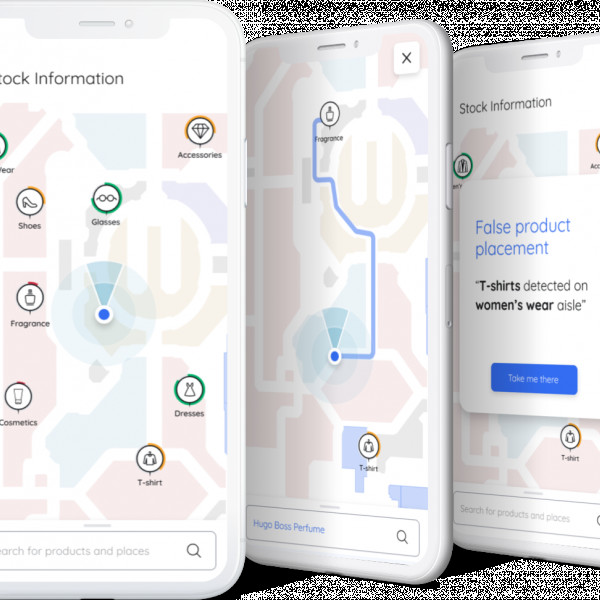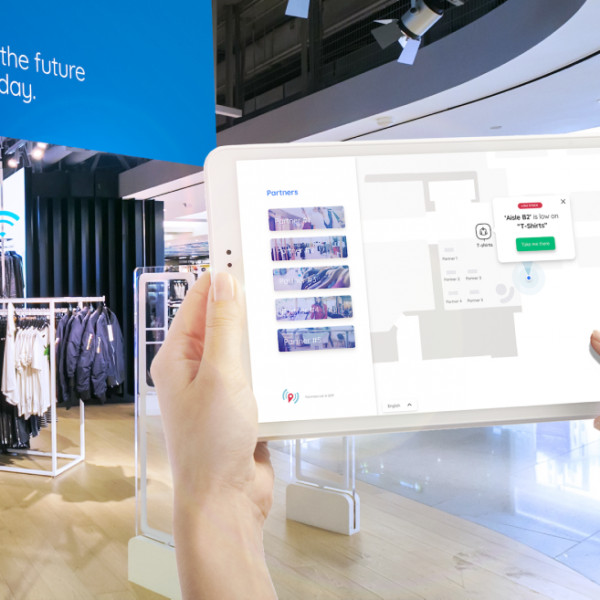What are Pointr and its Deep Location platform?
Founded in 2013 by a group of computer scientists, Pointr is a software as a service (SaaS) company. Specialising in indoor location technology, their mission is to deliver reliable and intuitive location experiences to connect people with buildings, at scale.
Pointr’s Deep Location platform enables businesses to create immersive location experiences and improve their operations in their physical space. Pointr works within different verticals, including retail, airports, real estate and healthcare, but their largest vertical is currently the workplace sector. Their vision is that any type of building can benefit from indoor location services.
In a world of GPS, where virtually every inch of the planet has been mapped, tools like Google Maps have dramatically enhanced the outdoor navigational experience. For a long time, that level of navigational sophistication did not cross the threshold into the indoor environment. With Pointr’s digital mapping and wayfinding technology, that’s all changing. Visitors to a building can now find where to go and where to find the things they need, digitally.
The technology is especially useful post-pandemic when hybrid workers visit the workplace less frequently and need guidance to navigate to unfamiliar and specific locations, like going from a parking space to a meeting room, finding out where the team is, or navigating to the reserved workstation. With digital maps, it can even be deployed in the creation of Digital Twins – virtual representations of real-world environments which can be used to improve building operations and enable smart building IoT using real-world spatial data.

How do physical and digital wayfinding work together?
“When you think about it, these two aspects, physical and digital, actually come hand-in-hand and complement each other.” - Eva Cheng
When it comes to innovations in maps and wayfinding, the retail sector is always looking to push the boundaries of what’s possible to enhance the customer experience. So, it’s no surprise that luxury retail store Harrods was the first to integrate digital maps and wayfinding. Retail is fast becoming the space where digital and physical wayfinding comes together because of the need to serve omnichannel consumers.
Retailers like Harrods strive for a consistent wayfinding experience, both physical and digital. For instance, Endpoint proposed a room numbering system similar to a public gallery for Harrods. The names of rooms can be changed, but the numbers stay the same. The most important thing is that both physical and digital keep consistency across all touchpoints – design, colour, typeface, language, information, and even verbal instruction.
The synergy of physical signage and digital navigation means that visitors can seamlessly switch between the two, exploring by themselves using physical wayfinding features or following directions via the interactive map on their phone. This provides a more unified experience that caters to new shopping patterns.
However, to fully leverage the potential of digital wayfinding, organisations have to find new ways to incentivize visitors to download apps and make use of digital maps and wayfinding. For example, a recent Endpoint workplace project did away with a front desk and lanyards, requiring office staff to use the app to enter the building.

What’s the future of Pointr and digital wayfinding?
Pointr’s aim is simple and ambitious: to digitise any building in the world, combining physical and digital wayfinding to create a unified ‘phygital’ experience. When it comes to large public spaces like department stores, shopping malls, business campuses, and universities – location services paired with physical wayfinding can help to create a more seamless visitor experience.
This creates the need for digital wayfinding solutions to work more closely with physical signage and wayfinding consultants. As people start to expect the same level of navigational guidance indoors as they do outdoors, there’s a future need and opportunity for wayfinding specialists like Endpoint to collaborate with location technology experts like Pointr on digital wayfinding and app development.
The future is about trying to integrate experiences, so that knowing where you are and where you’re going is seamlessly connected online and offline.
Our podcast is available on Spotify, Apple Podcast and YouTube. Don't forget to subscribe and rate us!

